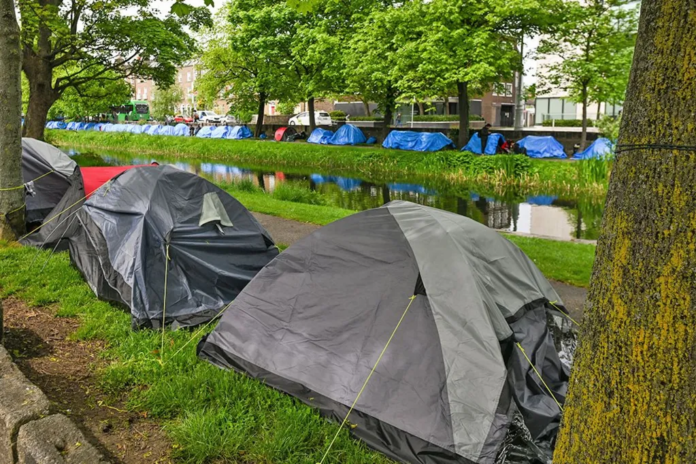The three Gardai – Irish police officers – walk down the rows of passengers on the bus, a few kilometres south of the border with Northern Ireland.
Observing this is the head of the Garda National Immigration Bureau, Det Ch Supt Aidan Minnock.
“If they don’t have status to be in Ireland, we bring them to Dublin,” he explains. “They’re removed on a ferry back to the UK on the same day.”
Asylum applications in Ireland have risen by nearly 300% so far this year compared to the same period five years ago. A spike in arrivals from the UK has been driven by various factors, among these the UK’s tougher stance post-Brexit, including the fear of deportations to Rwanda, as well as Ireland’s relatively healthy economy.
Most asylum seekers coming from the UK to the Republic of Ireland enter the country from Northern Ireland, as – unlike the airport or ferry routes – there is no passport control. The Garda checks along the 500km-long (310 miles) border are the only means of stopping illegal entry.
Det Ch Supt Minnock told the BBC that 200 people had been returned to the UK this year as a result of these checkpoints, thought to be only a small fraction of those crossing the porous border illegally.
More than 2,000 people who arrived in Ireland illegally have been issued deportation orders so far this year, a 156% increase on the same period in 2023. However, only 129 of those people (just over 6%) are confirmed to have since left the state. The government has said it will begin chartered deportation flights in the coming months, and free up more immigration Gardai from desk work.
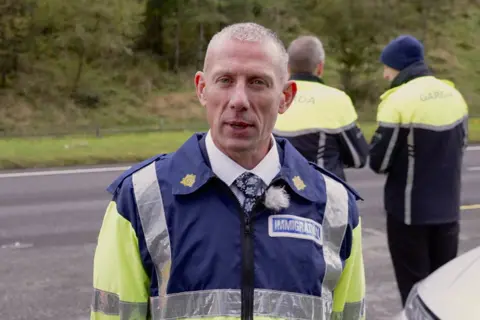
Onboard the coach near the border, the Gardai question a young man about where he lives. He is Algerian – a student, he says. The police are suspicious and he is taken to the detention vehicle while his identity is checked.
A veteran of war crimes investigations in post-war Bosnia – as part of an EU police team – Det Ch Supt Minnock knows well the violence and poverty that drives migration.
“This is growing at such a scale because of the conflict and instability right across the world,” he says.
Public concern over immigration is closely linked to Ireland’s chronic housing problem. The Republic now has the worst record in the EU for housing young people.
The CEO of the Irish Refugee Council, Nick Henderson, says the crisis is a “perfect storm”, created in part by the failure to build enough housing stock over decades, and a government unprepared for the upsurge in asylum seekers – known in Ireland as International Protection Applicants (IPAs) – needing help with accommodation.
“[The government] is only able to provide accommodation through private contractors. That, coupled with an increase in the number of people seeking protection in Ireland, and against the background of a housing crisis has meant, in effect, that Ireland’s asylum reception system has really collapsed.”
In nearly three years, the number of asylum seekers accommodated by the state’s International Protection Accommodation Services (IPAS) has more than quadrupled – from 7,244 to 32,649 people. Over 100,000 Ukrainians, who were given a separate status, also sought refuge in Ireland during that time.
Tens of thousands of international protection applicants – some already with asylum status in Ireland, others waiting to be processed – have been sent to communities around the country, accommodated in hotels, former schools, apartments, even large tented camps.
Ireland’s housing shortage means that even those granted asylum are struggling to leave the temporary system as others arrive. Nearly 1,000 people are now living in tented accommodation.
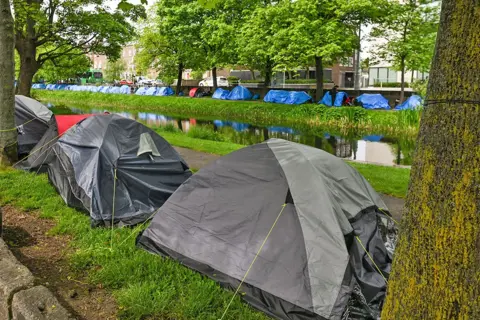
This makeshift response has generated resentment. In the village of Dundrum, County Tipperary – population 221 – a group of locals attempted to block the arrival of asylum seekers at the gates of a former hotel in August.
The proposal to house up to 277 people at Dundrum House, which hasn’t operated as a hotel since 2015, would double the local population. Locals worry that it will be a permanent fixture.
“How can our government not engage properly with us?” asks Andrea Crowe, a local teacher and protester who has frequently spoken in public. She cites concerns over housing, health and education provision for the community.
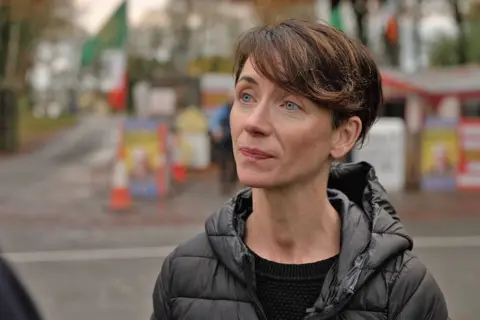
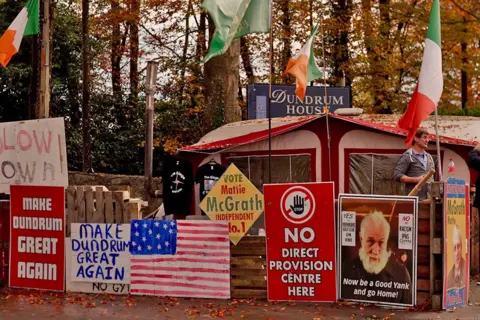
Since July, there has been a 24-hour protest outside the hotel. Ms Crowe, whose family once owned the Dundrum House hotel, accuses the government of failing to consult with the community – a common complaint around the country.
“How can we not be concerned?” she says.
The IPAS community currently living at Dundrum House is made up of about 80 women and children. There is also a separate group of Ukrainian families, welcomed after the Russian invasion in February 2022.
Several locals told us they feared that single men – who make up 35% of asylum seekers arriving in Ireland so far this year – would eventually replace the women and children, although there so far is no evidence to suggest this is planned in Dundrum.
Local builder, Martin Barry, cites the housing crisis as a key reason for his protest, particularly the plight of his eldest son. “My own young fella, he can’t afford a place to rent,” he says.
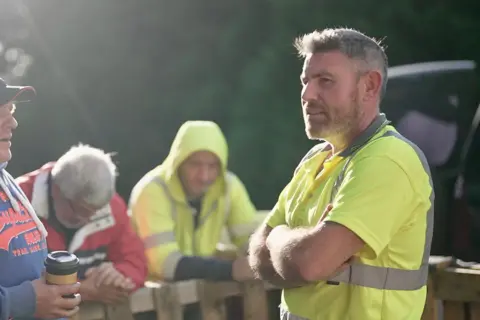
“It’s just the worry of what’s coming down the line,” he says.
We meet two South African women given refuge at Dundrum House. Both were sent from their accommodation in Dublin – 180km (110 miles) away – to make way for newer arrivals into the capital, some of whom were sleeping in tents on the streets.
The women ask to remain anonymous. “Lerato” had been in Dublin for a year. “I had integrated with society, and made friends. My child was attending school and I was comfortable.” Her friend “Kayla” speaks of being isolated in Dundrum, a farming community with limited transport amenities.
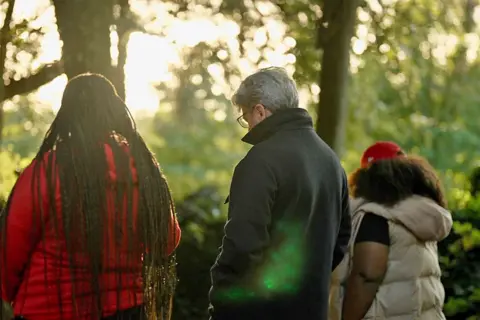
Far-right parties show scant support in opinion polls. Immigration worries are likely to be expressed in support for independent candidates. But online, far-right agitators stoke fear. There have been violent riots and arson attacks on sites meant to house, or rumoured to house, asylum seekers, and refugees have been attacked in their tents on Dublin’s streets.
A common conspiracy theory is that migrants are being “planted” in Ireland as part of a plot to dominate Irish people and destroy their culture.
We saw two posters referring to a “plantation” at the Dundrum House protest. The now-closed online GoFundMe Page for Dundrum referred to Ireland’s “indigenous” population fighting “for our very existence” and the government “flooding communities with asylum seekers”.
The page – which raised more than €3,000 (£2,500) – was set up by a local businessman. He turns out to have posted antisemitic, Islamophobic and anti-vaccine conspiracist material on social media.
We ask Andrea Crowe, one of the prominent voices of the Dundrum protest, if she is comfortable with such a person being involved? Ms Crowe says she does not “follow social media much” and it is not up to her to manage other people’s reactions. But she says she’s “not comfortable with it”.
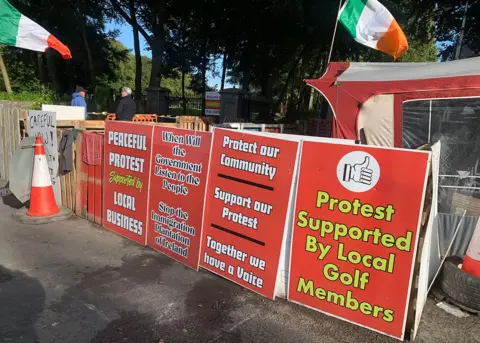
Others in County Tipperary welcome asylum seekers. Some 17 groups came together under the slogan “Tipperary Welcomes” after the Dundrum protest began.
John Browne, a member of the community council, says the issue divides people. “I don’t have a problem with it because we’re relatively wealthy, and the situation is pretty bad in parts of Africa and where most of these people are coming from.”
But he disagrees strongly with the numbers involved in small places like Dundrum. “It imbalances the community. And it’s no good for the people coming in, because there’s nothing here for them.”
We caught up with Ireland’s Minister for Integration, Roderic O’Gorman, while he was campaigning in Dublin for the General Election, due to be held on 29 November. He now canvasses votes with two police guards after being assaulted by a man protesting against immigration.
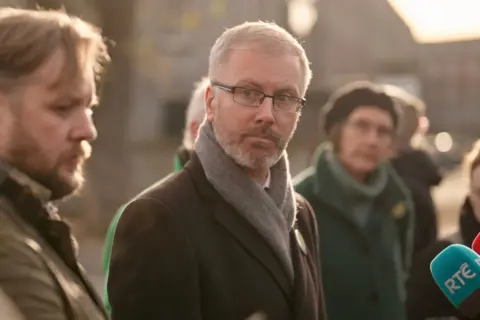
Mr O’Connor says many areas welcome asylum seekers.
“There are communities all over the place who are actually embracing and supporting,” he says.
But he accepts some failures. “I recognise in the initial parts of our response, there were times where there wasn’t that level of engagement that we need,” he says.
There are now Community Engagement Teams responsible for liaising with residents, although the protesters we spoke to in Dundrum say they have had only one meeting with a team and are still no wiser about the long-term plans for the hotel.
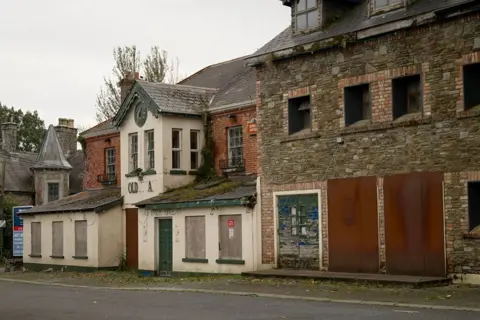
Official policy is hardening. Ukrainian asylum seekers who arrived amid widespread public sympathy and were given special benefits, recently saw these slashed from €232 (£190) to €38.80 (£32) per week – a cut of 83%.
South Africans now need visas to enter the country. A visa loophole which allowed Jordanians – at one point the largest group of asylum seekers in Ireland – to enter from the UK has been closed.
Concern over immigration has so far not translated into electoral support for far-right parties. Nick Henderson at the Refugee Council believes this need not be inevitable in Ireland. “Communities want to welcome people, but they need resources. They need communication.”
The Republic’s image as a stable and progressive democracy won’t change in this electoral cycle. But the rise in far-right populism internationally is a warning for the future – of how concern over immigration can be made a focus for other discontents and create turbulent politics.

